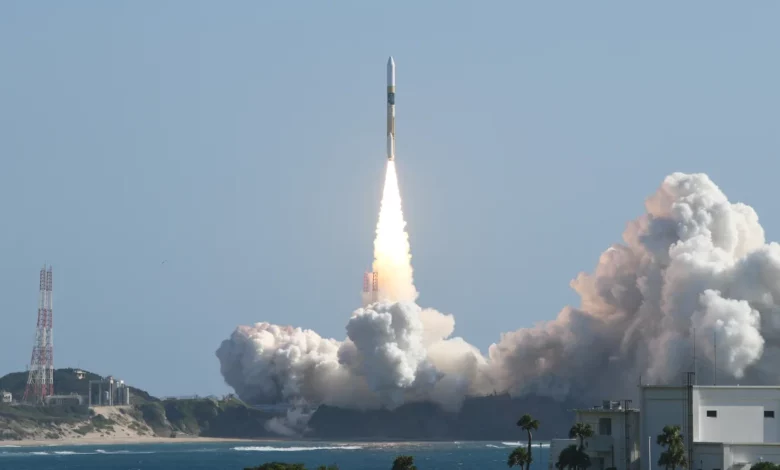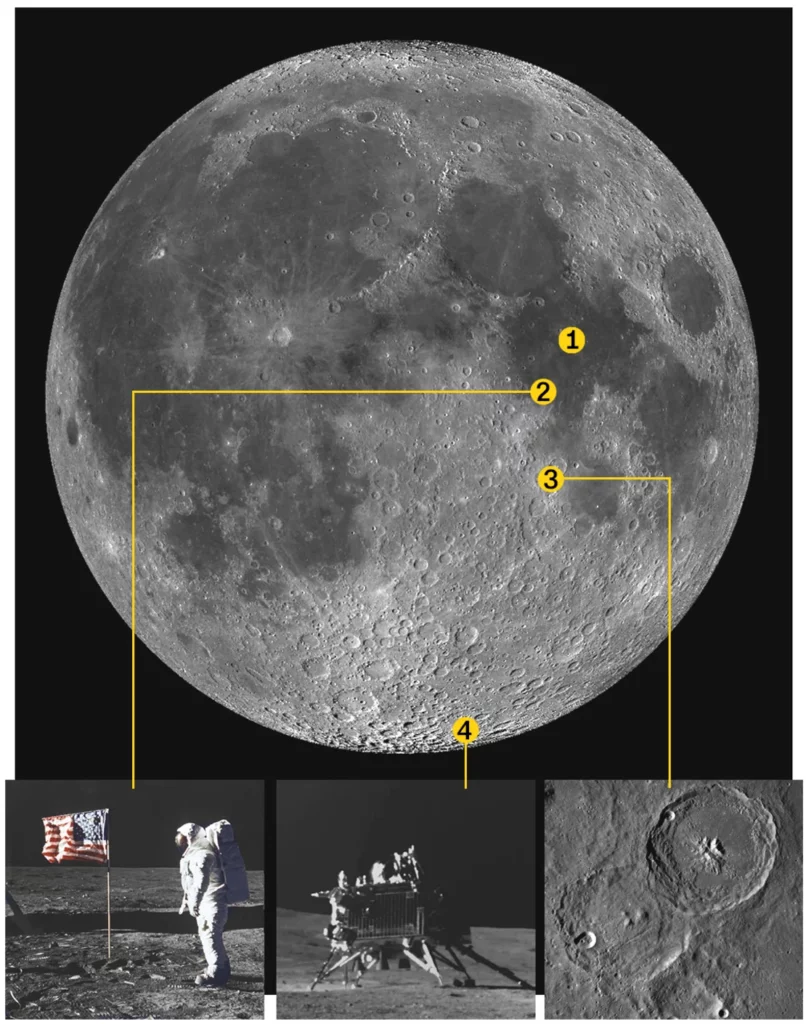
JAXA’s SLIM mission is approaching the moon and preparing for a historic landing attempt. While the first US lunar lander mission in decades failed to reach its destination.
The Japan Aerospace Exploration Agency’s Smart Lander for Investigating the Moon, or SLIM, is scheduled to land on the lunar surface. If successful, SLIM’s landing will be Japan’s first time putting a robotic explorer on the moon’s surface. In addition, it is the third country to do so in the twenty-first century and the fifth to soft-land a spacecraft since the Soviet Luna 9 mission in 1966.
The spacecraft, also nicknamed the “Moon Sniper” for its precision technology, will begin its descent toward the lunar surface. The landing will be streamed live on YouTube in Japanese and English.
“The start of the deceleration to the landing on the Moon’s surface is expected to be breathless. Numbing 20 minutes of terror,” said Kenji Kushiki, the subproject manager of the SLIM mission, in a statement.
Related Article: The Moon May Contain Frozen Water
The small-scale exploration lander is designed to demonstrate a “pinpoint” landing at a specific location.
Other lunar landings, including NASA’s Apollo missions, achieved extreme accuracy in reaching a specific zone. However, SLIM’s technology aims to bring precision to robotic probes that are low-cost and lightweight. The hope, according to JAXA, is that the technology will make it possible for the small lander to target specific sites on the moon. Which allows SLIM to land even among treacherous, rocky terrain.
If successful, the technology could allow future missions “to land on planets even more resource-scarce than the moon,” according to the space agency.
“Nowadays, there has been an increase in the knowledge of target astronomical objects. And the details that should be studied have grown more specific so that high-accuracy landings near the target of study have become necessary,” according to JAXA.
The SLIM lander will land on a small area of only 100 meters (328 feet). In comparison, Astrobotic Technology’s Peregrine lunar lander, the first US lunar lander to launch in more than 50 years, was aiming for a landing zone of a few kilometers before being forced to abort its mission due to a fuel leak.
If SLIM misses this opportunity to attempt a landing, it will have another one on February 16.
Moon Sniper’s journey
In September, the SLIM lander launched alongside the XRISM satellite (pronounced “crism”), a joint mission between JAXA and NASA. Following the launch, SLIM used its own propulsion system to travel to the moon. On Christmas Day, the spacecraft successfully entered an oval-shaped lunar orbit.
Since entering an orbit that passes the moon’s north and south poles, the lander has been gradually approaching the surface.
If the spacecraft lands successfully, it will study the lunar surface south of the Sea of Tranquility. It’s where Apollo 11 landed in 1969.
SLIM, unlike other recent robotic missions aiming for the moon’s south pole, is targeting a site near a small lunar impact crater called Shioli. Located within a plain known as the Sea of Nectar, which scientists believe was formed by ancient volcanic activity. It will investigate the composition of rocks, which could help scientists discover the moon’s origins.
Related Article: US Moon Lander Is Now ‘On a Path Towards Earth’
JAXA’s SLIM Probe Set for Risky Lunar Landing: ‘Smart Eyes’ Technology Aims to Navigate Crater Ejecta for Crucial Interior Insights
“A closer look at such minerals could reveal information about the moon’s interior structure and formation,” JAXA said in a press release. “However, sites of crater ejecta are usually avoided due to the difficulty of landing within a small ejecta-strewn area on the sloped sides surrounding a crater.”
The SLIM probe employs vision-based navigation technology, which JAXA refers to as “smart eyes.” The spacecraft will take photographs of the moon’s surface as it approaches. It will quickly pinpoint the vehicle’s location on maps previously created by lunar satellites. Adjusting its trajectory autonomously as it swoops in for landing.
In those final moments, Kushiki stated that the moon’s gravity would constantly pull the SLIM lander toward the lunar surface, necessitating the continuous firing of the spacecraft’s engines.
“Landing is a one-shot game that cannot be undone,” he went on to say.
JAXA’s SLIM Mission: Precision Landing at the Moon’s South Pole

The SLIM mission comes amid a renewed international push to explore the moon. Following the United States, the former Soviet Union, and China, India became the fourth country to execute a controlled landing on the moon. That’s when its Chandrayaan-3 mission arrived in August near the lunar south pole.
However, other recent missions have demonstrated how difficult a safe landing on the lunar surface can be.
Related Article: Astrobiotic Failure is a Bump For Commercial Moon Landings
Challenges in Lunar Exploration: Recent Setbacks and Hurdles
In April 2018, Japanese company Ispace’s Hakuto-R lunar lander crashed into the moon after falling 3 miles (4.8 kilometers).
In August, a Russian mission known as Luna-25 crashed, marking the country’s first attempt to return to the moon since the fall of the Soviet Union. The Peregrine mission, which launched on January 8, was also the first lunar landing mission to launch from the United States in decades. But a critical fuel leak forced the lander to abandon its mission just hours later.
JAXA’s SLIM Mission Aims to Revolutionize Lunar Exploration
The spacecraft is expected to burn up when it reenters Earth’s atmosphere.
Astrobotic, a private company, developed Peregrine for NASA. Another commercial US lander, built for the space agency by the company Intuitive Machines, could launch as early as mid-February. If SLIM is successful, JAXA believes it will shift missions from “landing where we can to landing where we want.”





